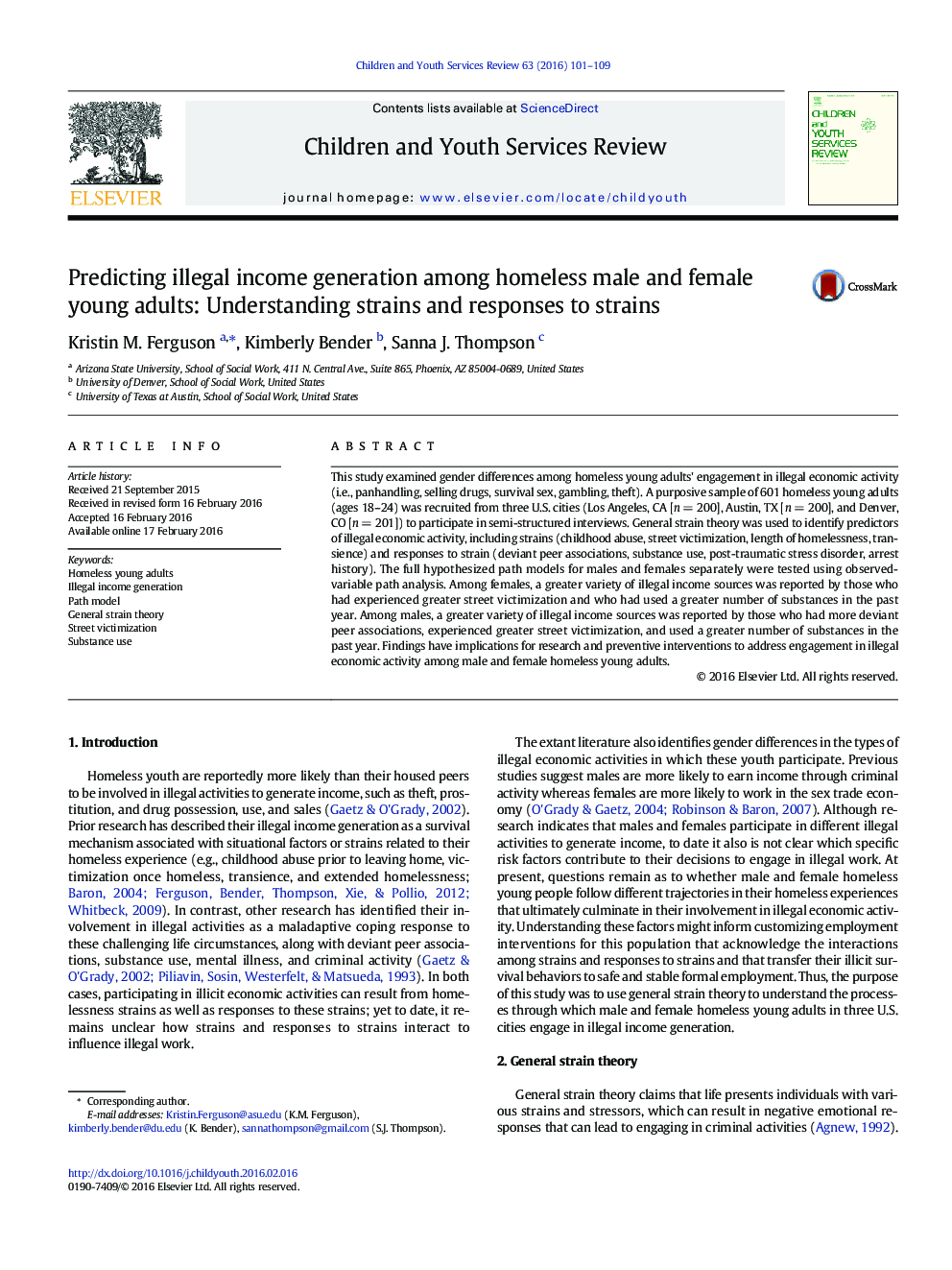| Article ID | Journal | Published Year | Pages | File Type |
|---|---|---|---|---|
| 345862 | Children and Youth Services Review | 2016 | 9 Pages |
•In males, illegal income was associated with greater deviant peer associations.•In males, illegal income was associated with street victimization and substance use.•In females, illegal income was associated with street victimization and substance use.•Childhood abuse was indirectly associated with illegal income generation.•Harm-reduction interventions are needed to reduce substance use and victimization.
This study examined gender differences among homeless young adults' engagement in illegal economic activity (i.e., panhandling, selling drugs, survival sex, gambling, theft). A purposive sample of 601 homeless young adults (ages 18–24) was recruited from three U.S. cities (Los Angeles, CA [n = 200], Austin, TX [n = 200], and Denver, CO [n = 201]) to participate in semi-structured interviews. General strain theory was used to identify predictors of illegal economic activity, including strains (childhood abuse, street victimization, length of homelessness, transience) and responses to strain (deviant peer associations, substance use, post-traumatic stress disorder, arrest history). The full hypothesized path models for males and females separately were tested using observed-variable path analysis. Among females, a greater variety of illegal income sources was reported by those who had experienced greater street victimization and who had used a greater number of substances in the past year. Among males, a greater variety of illegal income sources was reported by those who had more deviant peer associations, experienced greater street victimization, and used a greater number of substances in the past year. Findings have implications for research and preventive interventions to address engagement in illegal economic activity among male and female homeless young adults.
